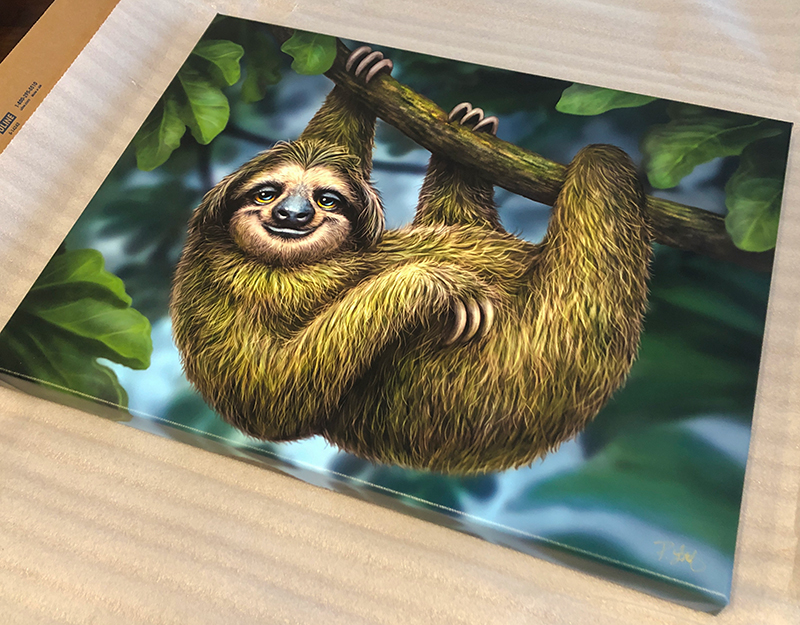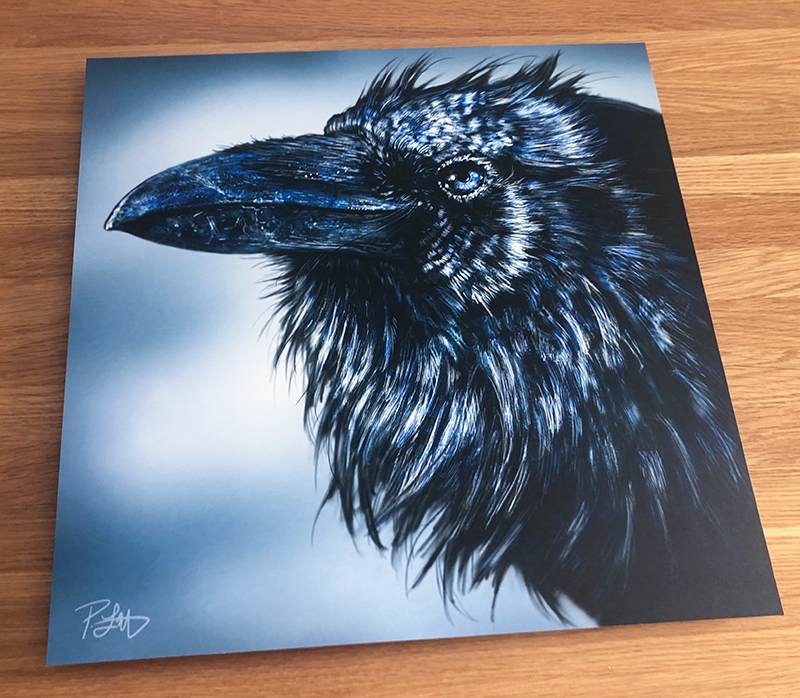
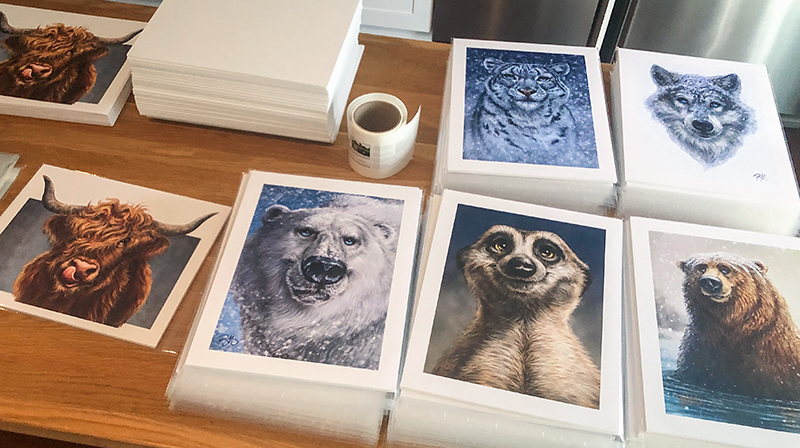
As I write this, everything is going well in the run-up to my biggest show of the year. I’m almost ready to load the car and drive in for setup on the 24th.
I still have to draw twice as many editorial cartoons this week to cover my newspapers while I’m away. I’ll also want two ready to send for the morning after I get home because I’ll be too tired to draw. But that’s always part of the prep.
This always feels a little like a looming new year to me. I look back on the 12 months since the last Expo, thinking about what I got done and what I failed to deliver.
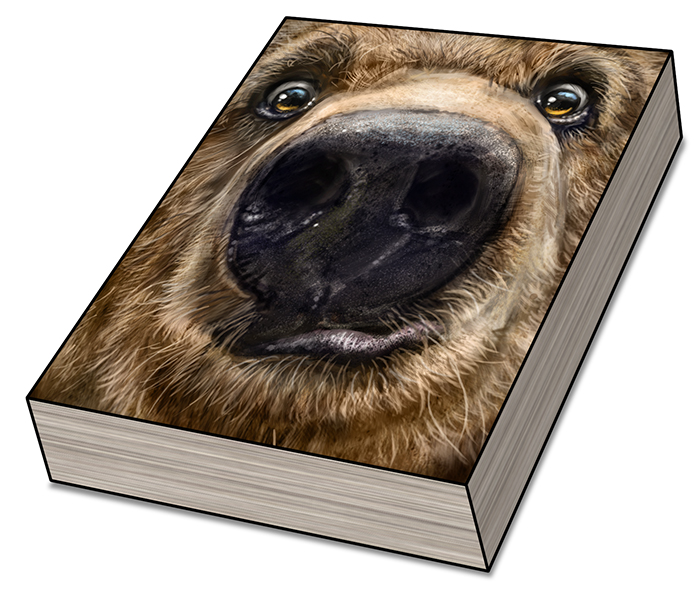
The Book
I promised myself I’d have it finished for this year. If you’ve been patiently waiting, there’s no way you’re more disappointed in me than I am in myself.
The reasons aren’t hard to decipher. There’s an imposter syndrome part of it, where if I keep procrastinating, I never have to put it out there and risk that it won’t measure up to my expectations. I’m not a deep well. This is basic psychology.
I have explained before that editorial cartooning provides a consistent monthly income, even though it’s less each year as newspapers stop using freelance work or they close entirely. But it’s hard not to prioritize reliable revenue.
My whimsical wildlife artwork continues to grow each year. Thankfully, It is now more than half my annual income, but licensing payments come in irregularly and are often late. Gift and trade shows are held at different times each year, so those, too, are inconsistent.
Though I’ve been self-employed for almost twenty years, I’m from a generation used to biweekly paycheques, and though it’s only an illusion of security, it’s difficult to dismiss.
THE BOOK (cue the Imperial March) means investing time, energy and funds into a project that may not generate revenue; if it does, it will come later. Making time to write and draw the content and learn Adobe InDesign means sacrificing drawing an editorial cartoon or a painting for immediate licensing that will generate revenue in the short term.
When I was in my early 30s, it felt like I had all the time in the world to risk and experiment. Twenty years later, it feels irresponsible, even though I know that’s yet another false perception. But I’ll continue to work to find a way to climb Bear Book Mountain, even though I know the only way to do that is one step at a time.
And, of course, I must prepare my apologies for another Expo where people (Hi, Kim!) ask me, “Did you finish your book yet?”
No. No, I haven’t. Maybe next year.
(awkward silence)
Want to buy a sticker?
A Great Show I Never See
I looked through the Expo Exhibitor List last week to see if any vendor friends were near my booth. Though it seems like they all have good spots, none are in my immediate neighbourhood, so I’ll only get to visit them briefly before the show opens each day.
When I attended this event as a ticket holder, I loved seeing the wealth of great artwork all over this show, but as a vendor, I see almost none. When the show is open, I’m there to work and can’t leave my booth.
In my early days of this show, Shonna came with me, but she’d have to take time off work. Eventually, she’d be there only on the weekend, as Saturday is especially busy, and I felt I needed help. That allowed me to leave the booth occasionally and check out the show. But it quickly became apparent that while Shonna was great at promoting and selling the work and even telling the stories behind the art, people always want to talk with the artist.
My leaving the booth for any length of time is bad for business.
I think it was 2019 when Shonna was supposed to drive in on Saturday, but a sudden whiteout snowstorm showed up, as will happen in this part of the world. The power even went out a few times. I called and told her to stay home; it wasn’t worth the risk. While only a one-hour drive from Canmore to Calgary, lousy weather makes that highway treacherous. Add in Alberta’s abundance of aggressive drivers and it was safer to stay home.
However, with her absence, I learned that I could manage the busiest day of the Expo by myself, and that was the last time I needed her to attend. Shonna has two jobs, and I never liked asking her to sacrifice her only day off each week to work at my job, too.
But last week, she surprised me and said she took Sunday off from her part-time job and wants to revisit the show and help me pack up at the end. Isn’t she sweet? I’m looking forward to her being there.
Here’s hoping it doesn’t snow.
What’s New This Year?
Every year, I have a loyal group of supporters who add to their collections. A few of them even volunteer to watch the booth for me if I need a bathroom break. Such nice people!
This year, I’ll have the usual magnets, coasters and stickers, a lot of large metal prints and some canvas, and new postcard sets, too!
The most popular offering, however, is always the 11”x14” poster prints, and I bring hundreds of them. This year, there are over 50 different animal paintings available. It’s always flattering and amusing when people flip through the bins and ask each other, “Do we already have this one?”
A couple of years ago, one of my favourite collectors flipped through the bin like he was looking through hockey cards or comic books and joked, “Got it, got it, got it, need it, got it, got it, need it.”
So, before this year’s show, whether they’re already up or waiting their turn on your wall, take a moment and remind yourself which prints you already have. But hey, if you buy a duplicate, you can always gift it to somebody else. Just sayin’.
To help plan this year’s print acquisitions, here are the nine new pieces I have painted since the last Expo. I’m bringing prints of all of them, but if you can’t make it to Expo, they’re already available in the store. A reminder that all prints are hand-signed and it’s Free Shipping on orders over $48. Check them out!
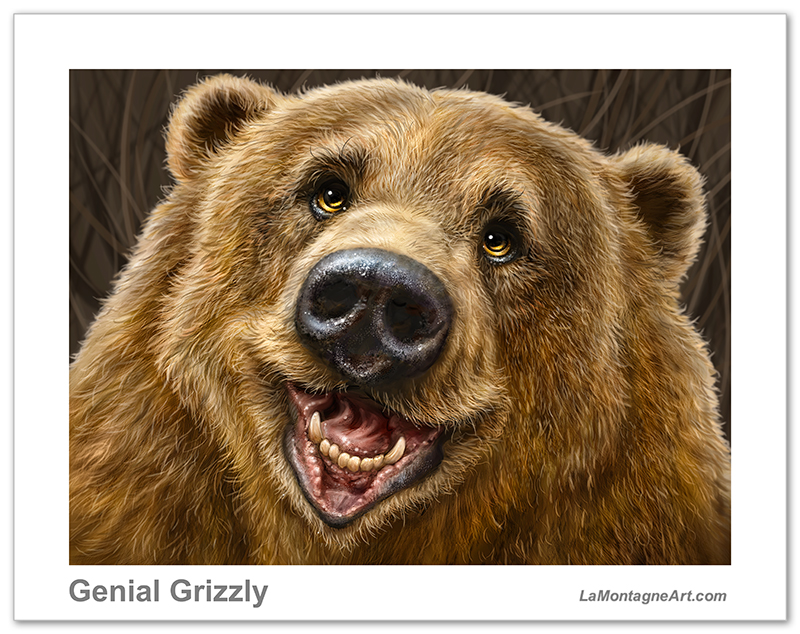
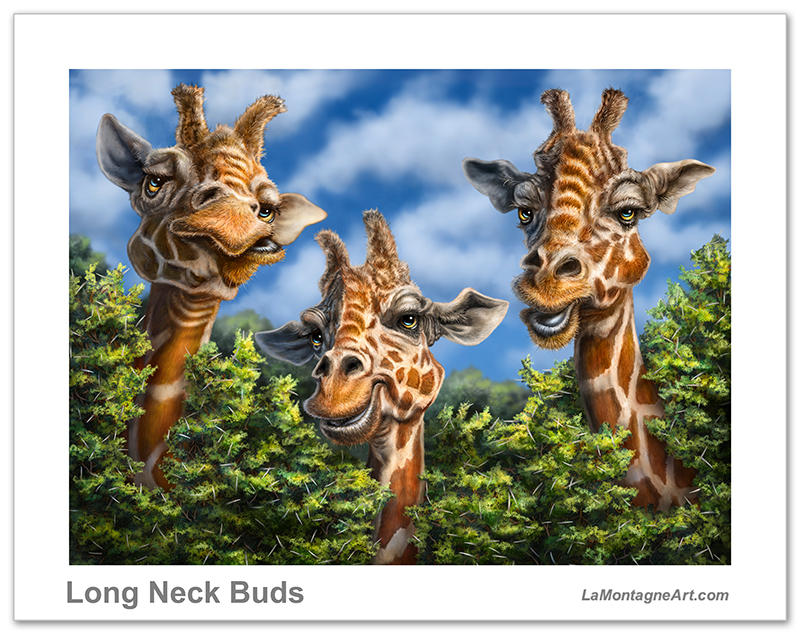
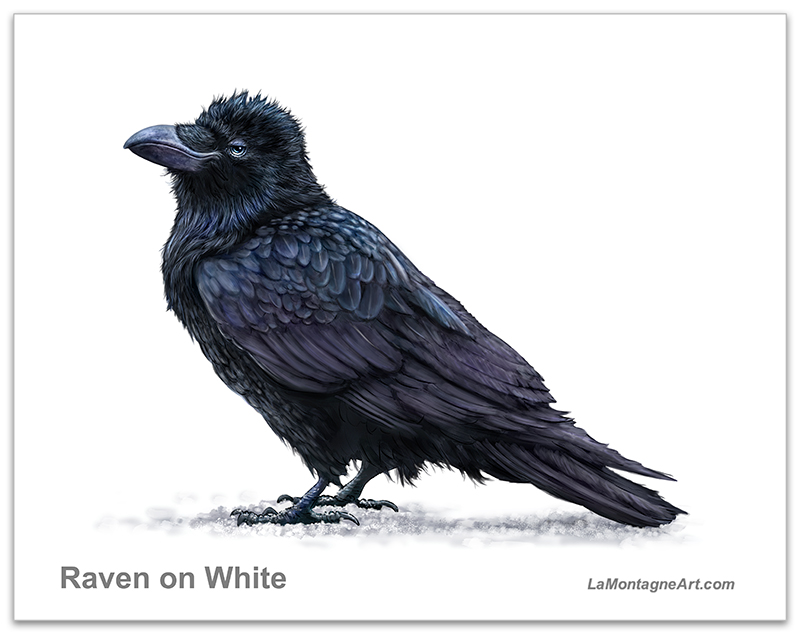
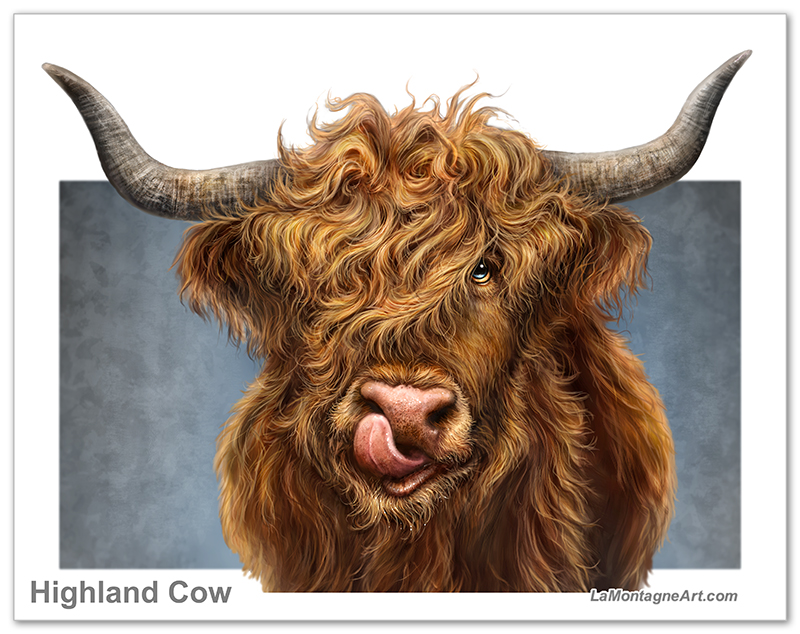
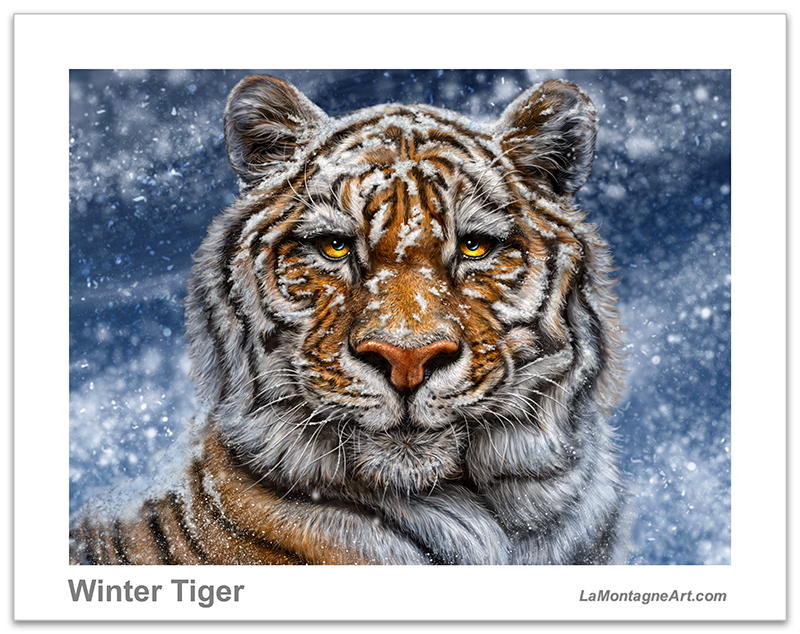
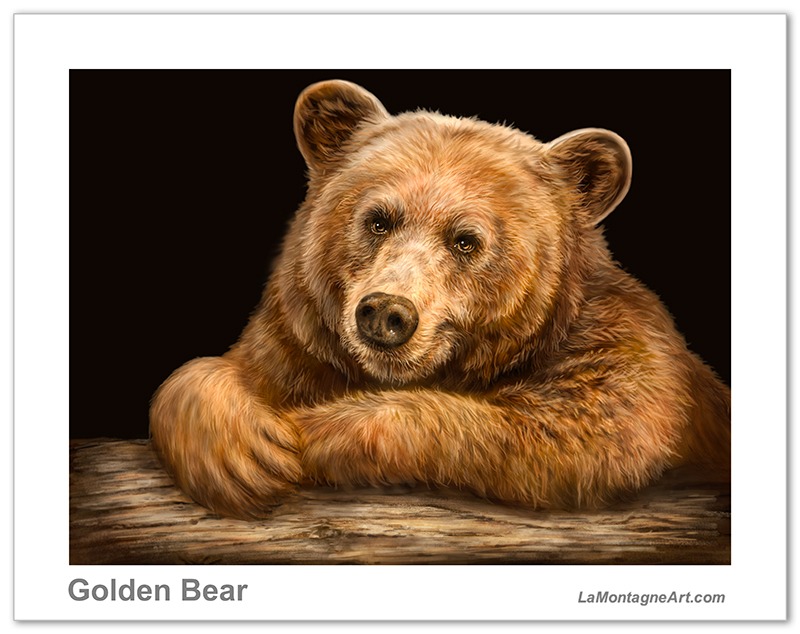
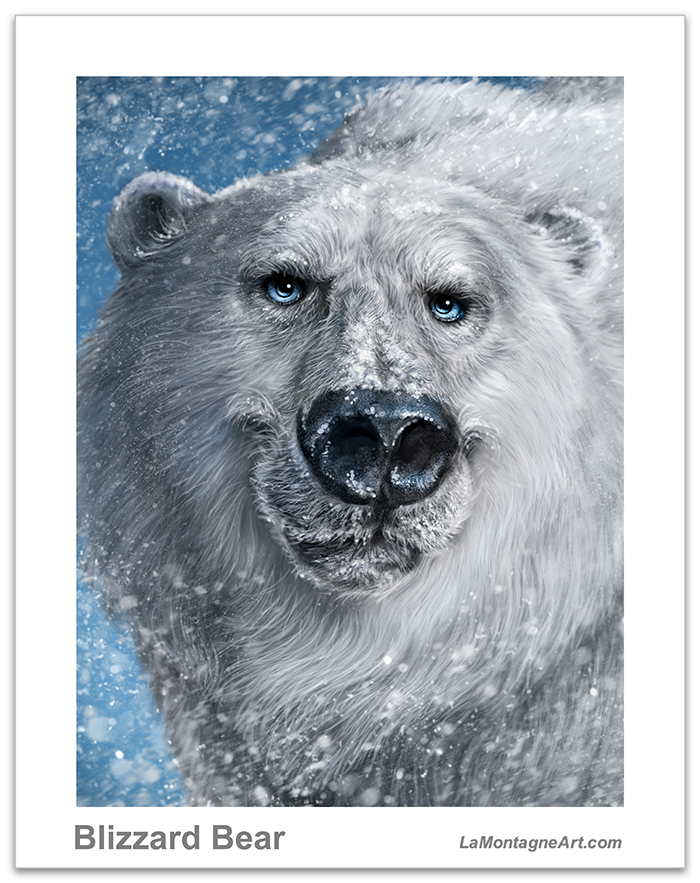
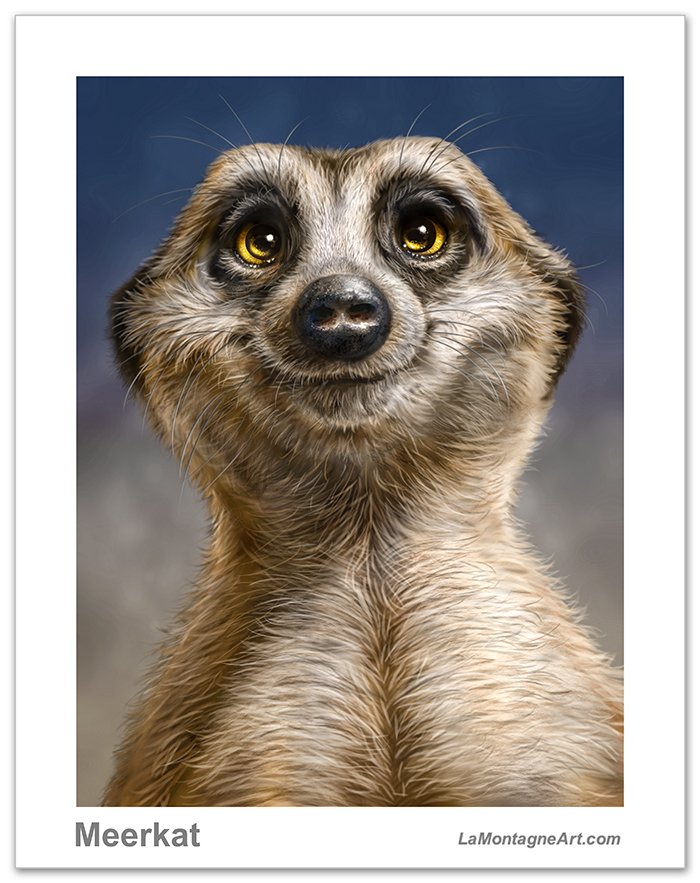
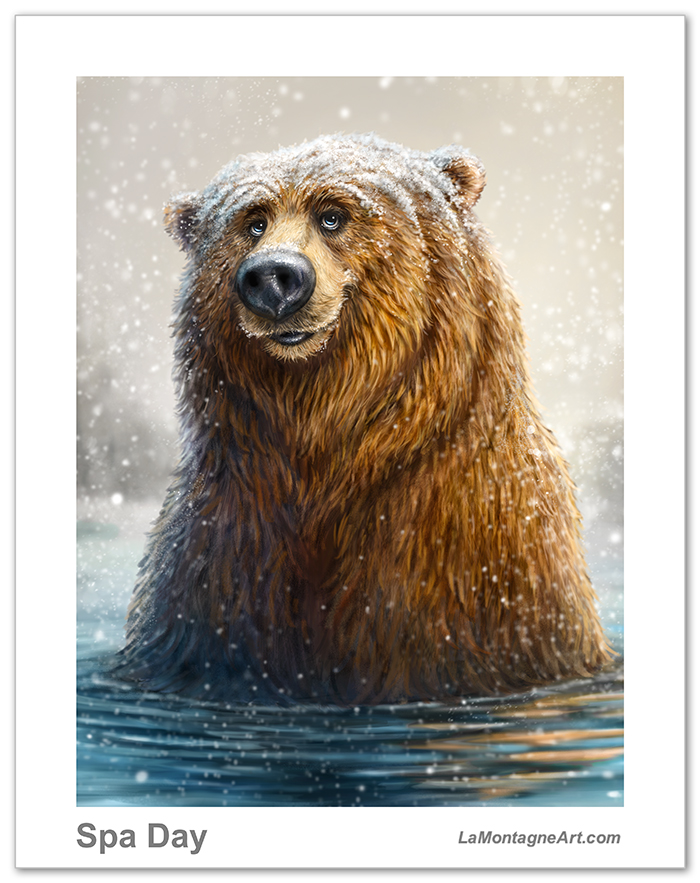 I don’t include a title or my website on the actual prints, just my signature. And I have lost count of how many times people tell me the prints look so much better in person than they do on the screen. I wholeheartedly agree that my Victoria printer, Art Ink Print, does a fantastic job.
I don’t include a title or my website on the actual prints, just my signature. And I have lost count of how many times people tell me the prints look so much better in person than they do on the screen. I wholeheartedly agree that my Victoria printer, Art Ink Print, does a fantastic job.
This event has become a proving ground for my latest work, and it’s often where I find out which prints will become popular and discover if perhaps my next bestseller is among this year’s creations.
I’m excited to find out.
Cheers,
Patrick






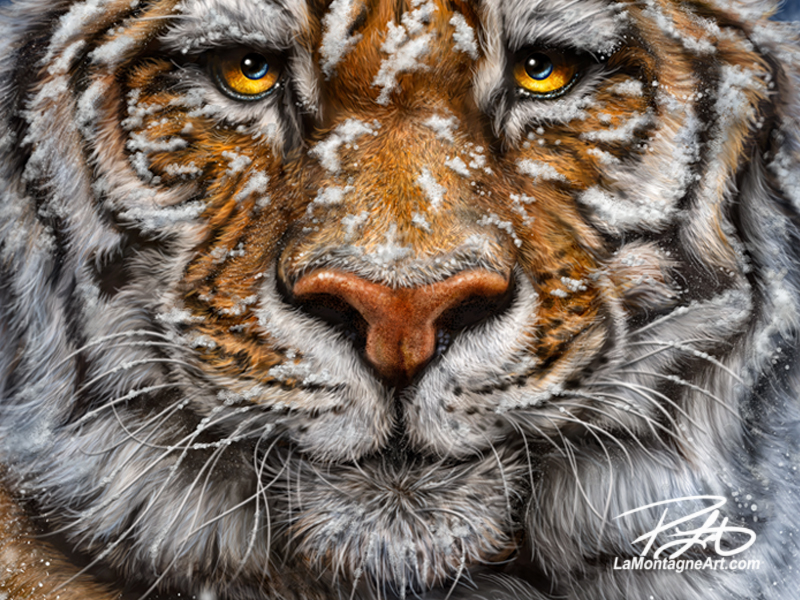
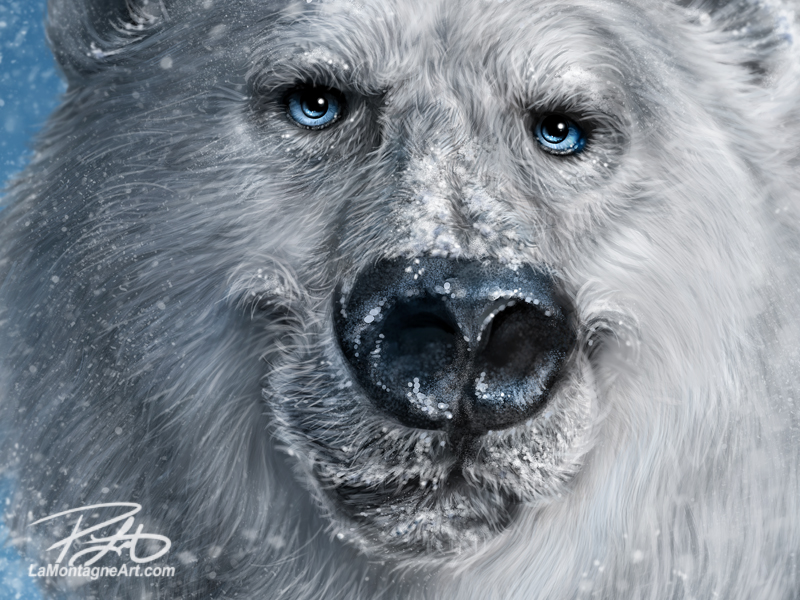
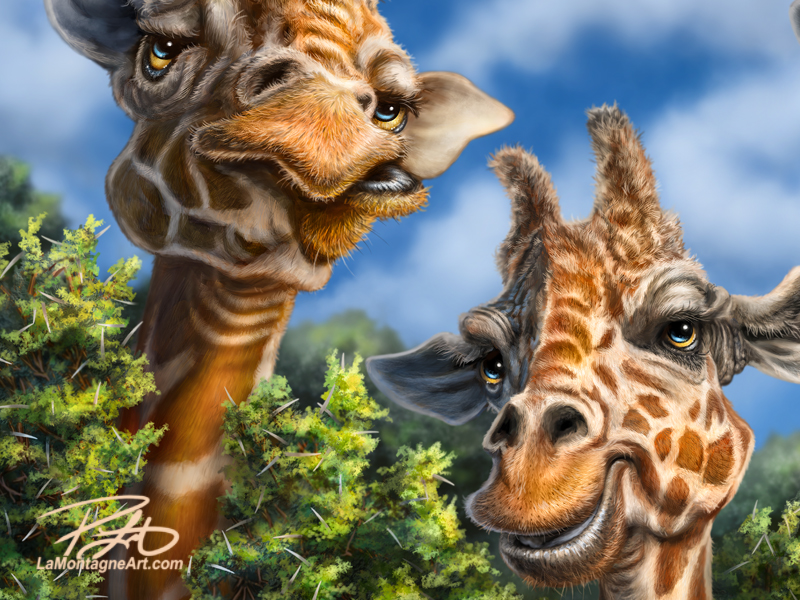


 This cool cat began as a design I pitched for a puzzle license that didn’t work out. But since I liked the idea, I decided to paint it anyway. It was challenging, and I spent a lot of time on the detail. I’m pleased with the finished piece.
This cool cat began as a design I pitched for a puzzle license that didn’t work out. But since I liked the idea, I decided to paint it anyway. It was challenging, and I spent a lot of time on the detail. I’m pleased with the finished piece.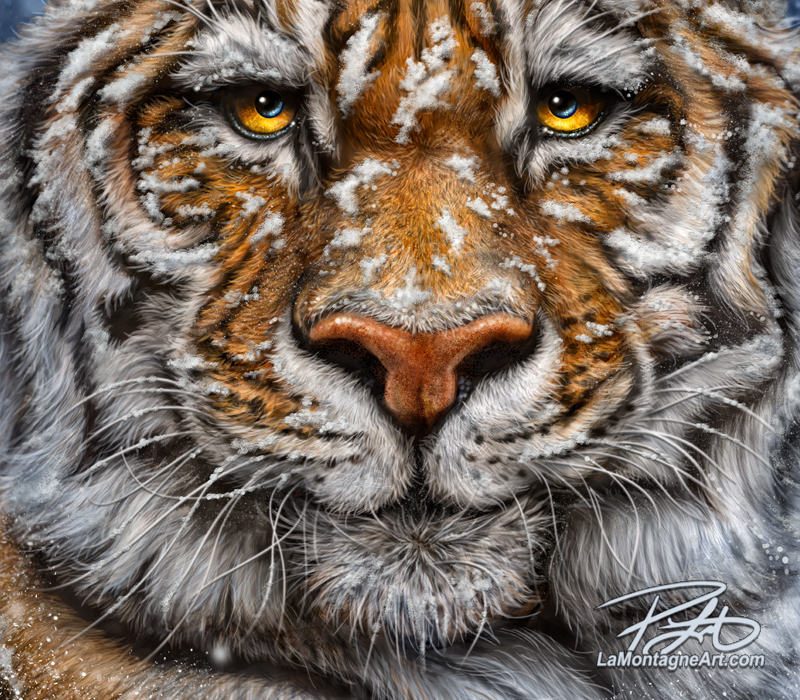 This new Winter Tiger will make a nice addition to my
This new Winter Tiger will make a nice addition to my 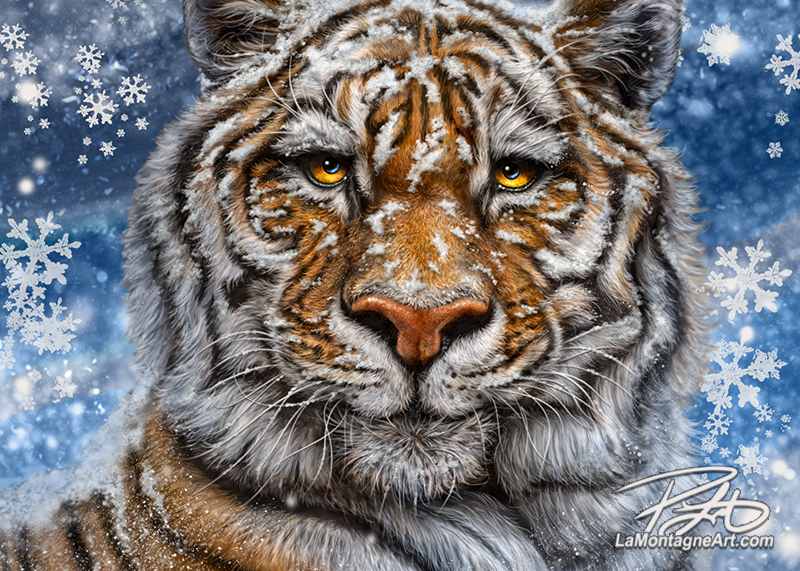 These next puzzles will also be 1000 pieces since many have asked for those. My recent
These next puzzles will also be 1000 pieces since many have asked for those. My recent 

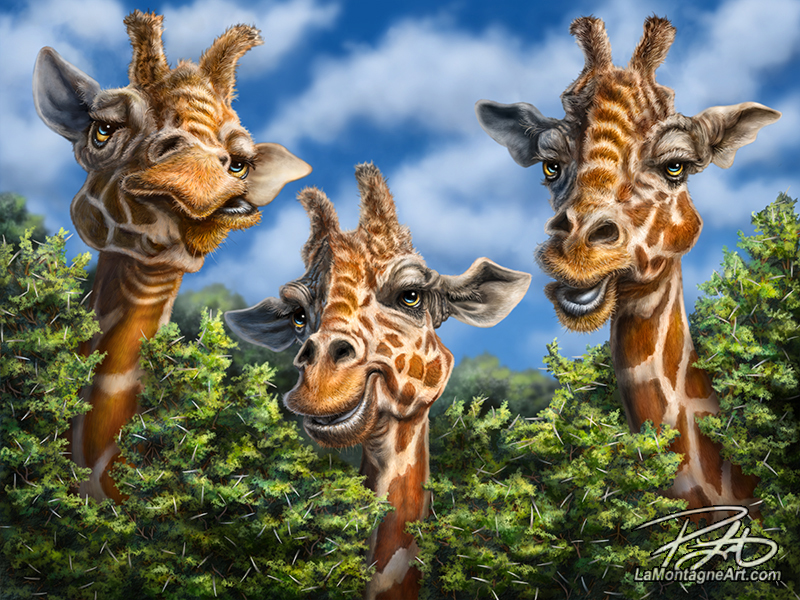 While labour-intensive, this painting wasn’t especially difficult. There weren’t any parts of it where I worried I might not have the necessary skills. That comes from experience, the feeling that “it’ll take a while, but I got this.”
While labour-intensive, this painting wasn’t especially difficult. There weren’t any parts of it where I worried I might not have the necessary skills. That comes from experience, the feeling that “it’ll take a while, but I got this.”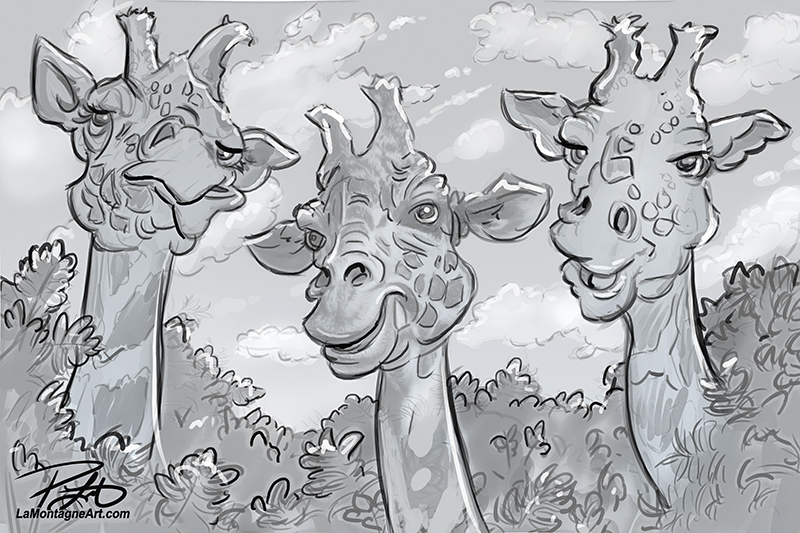 I began the project with several sketches and refined those into this mockup.
I began the project with several sketches and refined those into this mockup.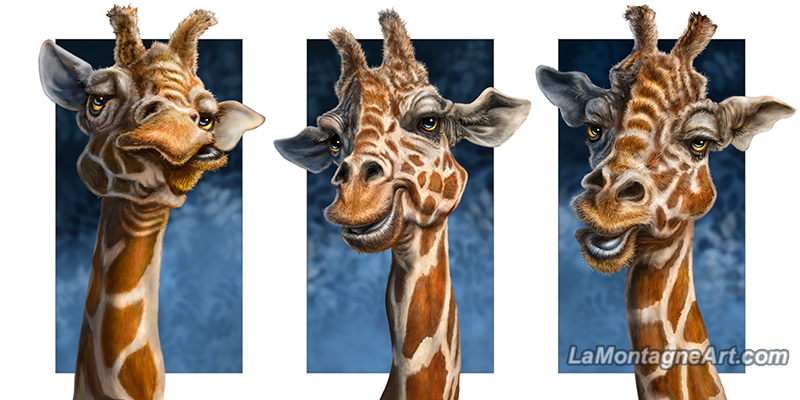 Then I painted the individual giraffes, creating three expressions different enough to be their own characters, but I still had to match the colours, light and shadow so they belonged together in the scene. Each giraffe could have been a single painting.
Then I painted the individual giraffes, creating three expressions different enough to be their own characters, but I still had to match the colours, light and shadow so they belonged together in the scene. Each giraffe could have been a single painting.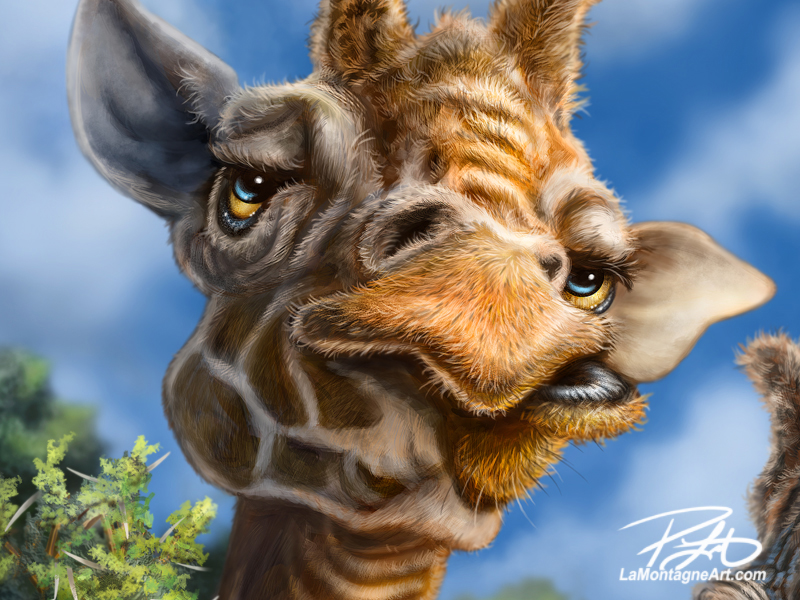 Painting the environment was the most challenging part. I could have gone with generic-looking green deciduous leaves, and most people wouldn’t have cared. Even though my style of art is whimsical, and I take liberties with exaggeration and expression, I still try for accuracy in the anatomy and environment.
Painting the environment was the most challenging part. I could have gone with generic-looking green deciduous leaves, and most people wouldn’t have cared. Even though my style of art is whimsical, and I take liberties with exaggeration and expression, I still try for accuracy in the anatomy and environment.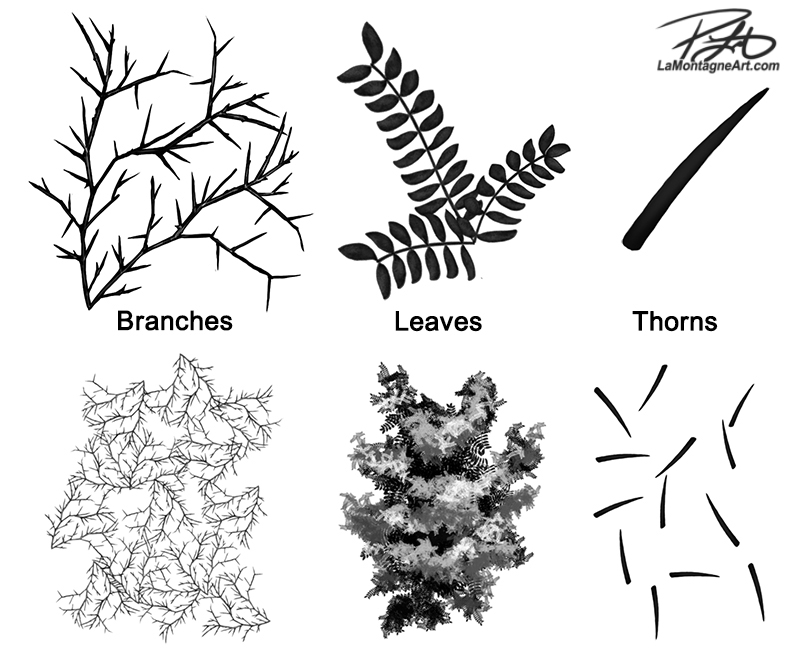 I don’t use any colour dynamics in my brushes. I prefer to pick and choose colour while painting, sampling from adjacent colours to get a better blend.
I don’t use any colour dynamics in my brushes. I prefer to pick and choose colour while painting, sampling from adjacent colours to get a better blend.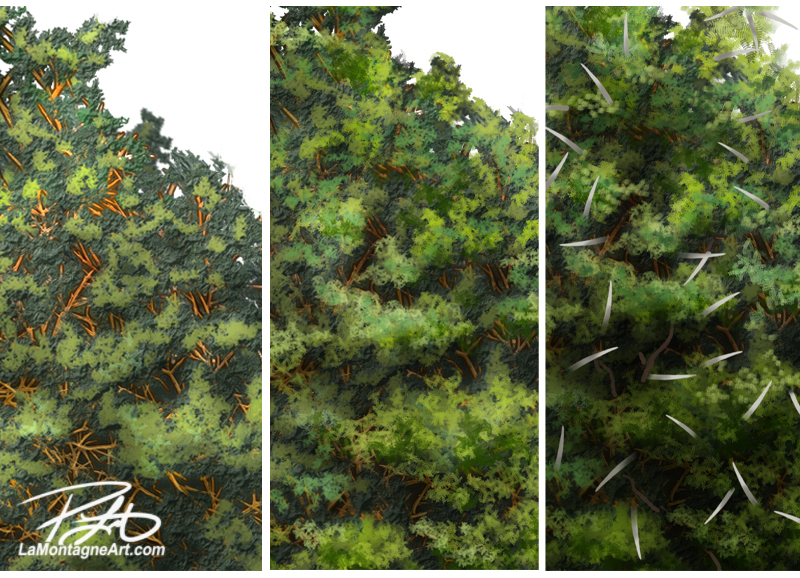 These new brushes allowed me to create a solid foundation, but it looked flat and lifeless until I spent several hours painting light, shadow, and detail to achieve the finished result.
These new brushes allowed me to create a solid foundation, but it looked flat and lifeless until I spent several hours painting light, shadow, and detail to achieve the finished result.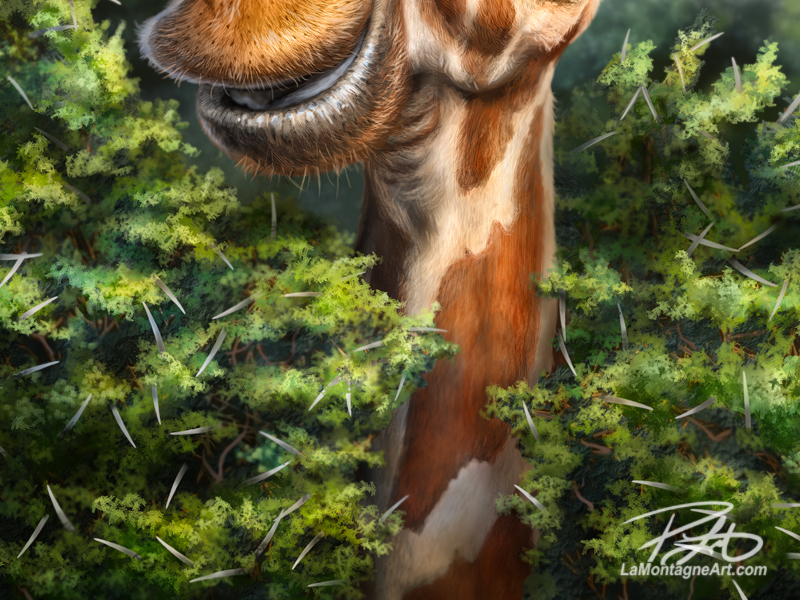 New digital artists often get obsessed with buying brush packs, thinking that’s all they need to achieve the same look as more experienced artists. But professional tools won’t provide a shortcut past the years of work it takes to become good at anything.
New digital artists often get obsessed with buying brush packs, thinking that’s all they need to achieve the same look as more experienced artists. But professional tools won’t provide a shortcut past the years of work it takes to become good at anything.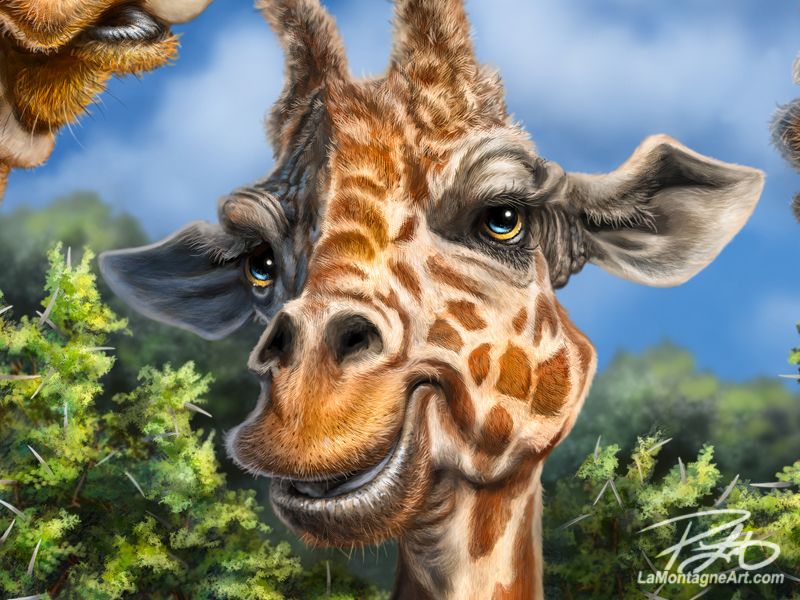 While I called it Long Neck Buds, someone could easily interpret them as two parents and a child. People often tell me what one of my paintings is ‘thinking’ or what their expression means, and I wouldn’t dream of contradicting them. If the art makes them feel something or triggers their imagination, that’s good enough for me.
While I called it Long Neck Buds, someone could easily interpret them as two parents and a child. People often tell me what one of my paintings is ‘thinking’ or what their expression means, and I wouldn’t dream of contradicting them. If the art makes them feel something or triggers their imagination, that’s good enough for me.


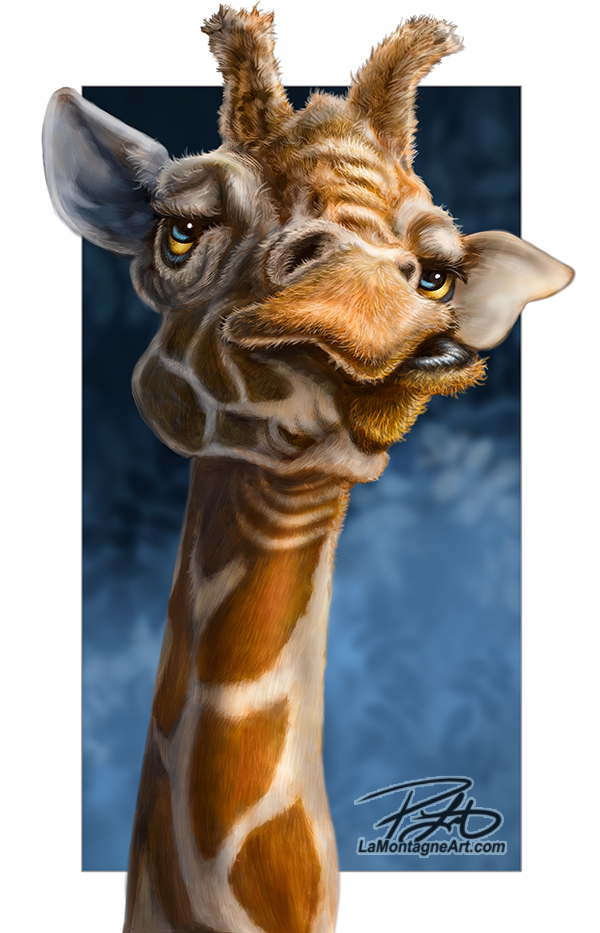
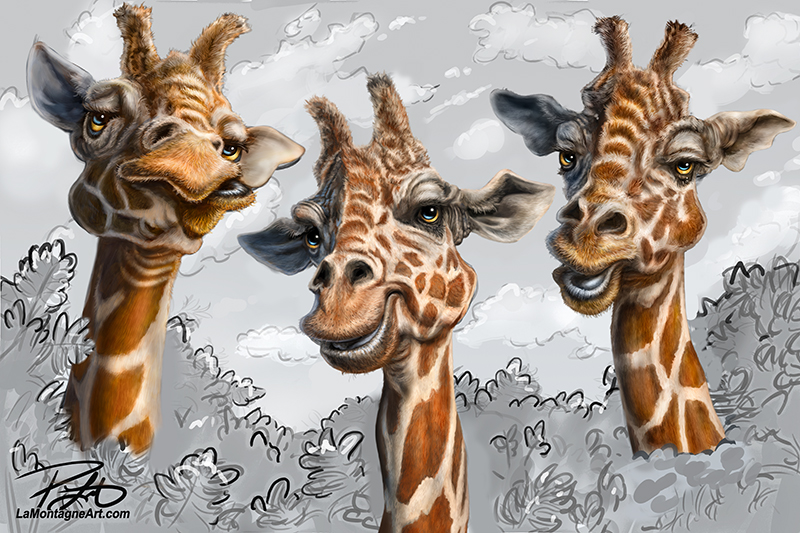 I have a few ideas on how best to do it, including creating a new brush for the task, but with no deadline, I have time to experiment.
I have a few ideas on how best to do it, including creating a new brush for the task, but with no deadline, I have time to experiment.
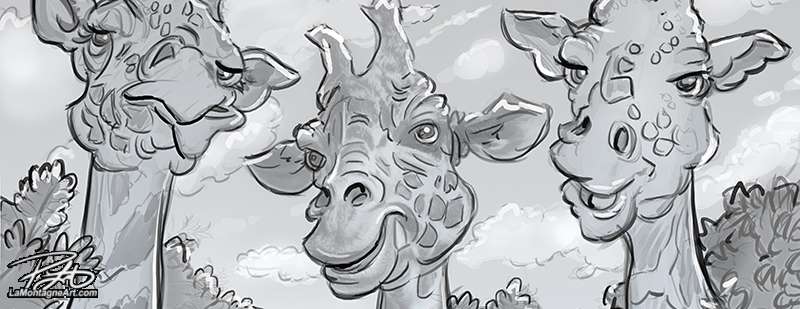 In 2008, I hosted the Canadian Editorial Cartoonists Conference in Banff. Several industry veterans who attended came up in a culture where busy unionized daily newspapers hired editorial cartoonists for impressive salaries, benefits, and pensions. I began my career at the end of all that.
In 2008, I hosted the Canadian Editorial Cartoonists Conference in Banff. Several industry veterans who attended came up in a culture where busy unionized daily newspapers hired editorial cartoonists for impressive salaries, benefits, and pensions. I began my career at the end of all that.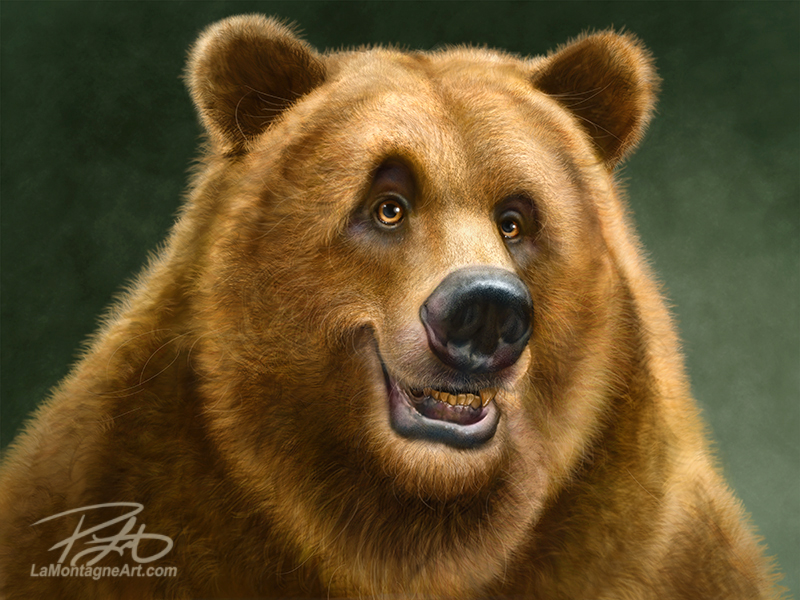
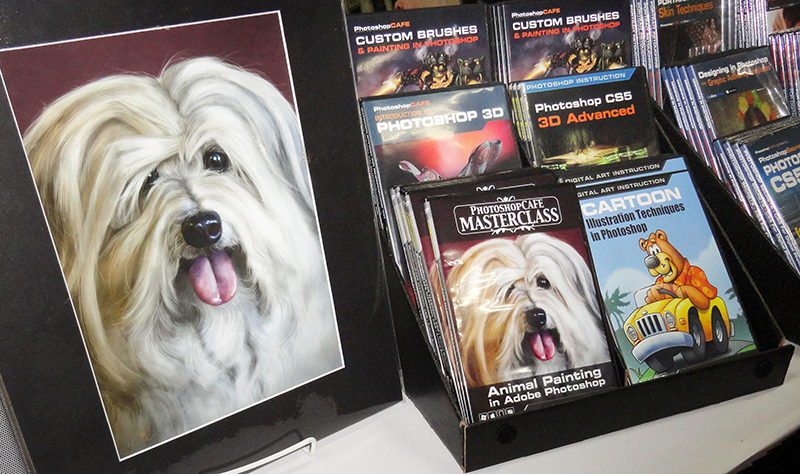 Eventually, social media killed the forum, and the organization rebranded. As a result, NAPP no longer exists, and the Photoshop World conference is a ghost of its former self.
Eventually, social media killed the forum, and the organization rebranded. As a result, NAPP no longer exists, and the Photoshop World conference is a ghost of its former self.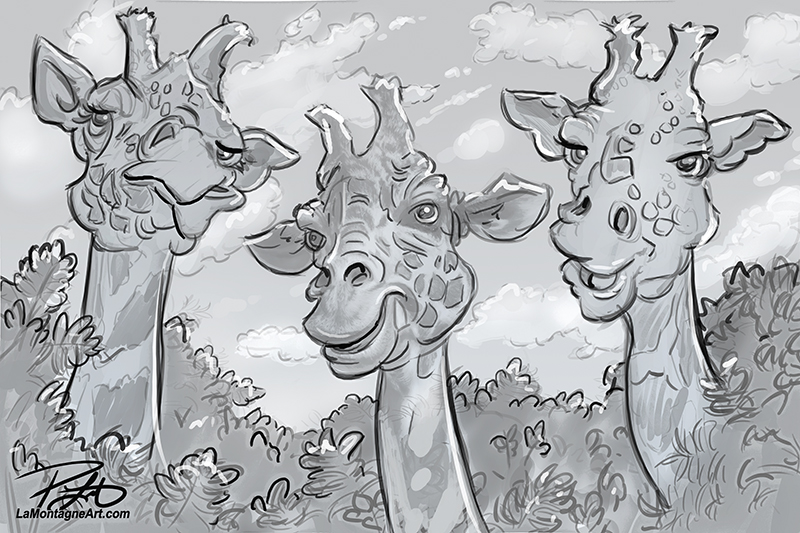 I’ve taken a new approach with the trio of giraffes, already titled “Long Neck Buds.” I don’t know if it will work the way I imagine it, but if it does, it will be the first of several I plan to paint this way.
I’ve taken a new approach with the trio of giraffes, already titled “Long Neck Buds.” I don’t know if it will work the way I imagine it, but if it does, it will be the first of several I plan to paint this way.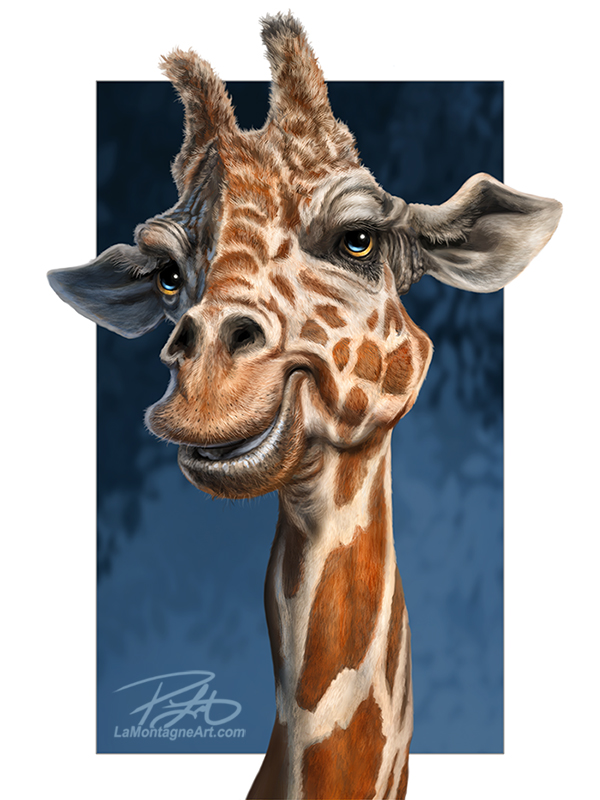 I’m a commercial artist, it’s how I make my living. I don’t pretend otherwise. But this is also supposed to be fun. I want to paint more detailed and elaborate images I’ll enjoy while also leaving options open for clients and licenses with different needs.
I’m a commercial artist, it’s how I make my living. I don’t pretend otherwise. But this is also supposed to be fun. I want to paint more detailed and elaborate images I’ll enjoy while also leaving options open for clients and licenses with different needs.